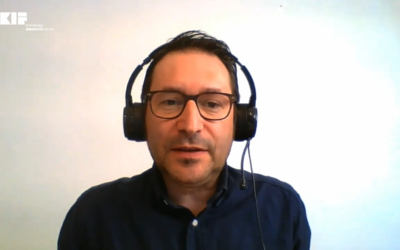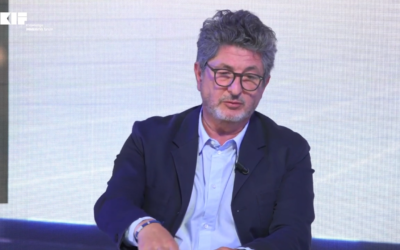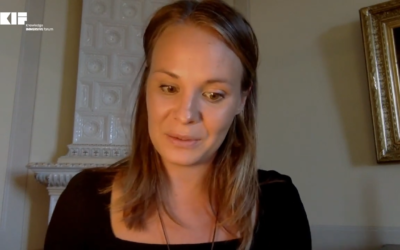Rev Labaredian : If you look at what is involved in creating a video game and what a modern video game is today, a 3D video game, it’s essentially a simulation of a whole other world.
We’re creating these worlds that look beautiful, that look closer and closer to our reality. Things inside the world behave correctly. We simulate the physics inside these worlds.
So when things interact with each other, it looks correct and behaves correct. And we also fill these worlds with intelligences, with other beings, AIs.
So all of these things combined are the ingredients that you need to construct another virtual world, what we’re now starting to call the metaverse more commonly.
In order to do the world justice, to do it at the fidelity and the quality and the accuracy that we really want as humans, you need an amazing, an awesome amount of compute.
We still aren’t quite there yet. You can use every, every bit of compute on the Earth that’s available right now, you could dedicate it to doing a simulation of the world, and it’s still not enough. So we need to continue to keep building this.
The start of 3D video gaming in the nineties coincided with when we started in video. We built these special processors, these chips designed to accelerate the rendering portion of this problem. And what rendering is, it’s a simulation of the physics of how light interacts with matter.
That’s what we used to create the images. Years later, we made our processors more general so we can program them not just to do the physics of light, but to do physics in general.
And next step after that, since we made our processors, these powerful computing machines that were available to everyone who wants to build a PC to play video games, we made them so programmable that deep learning and artificial intelligence became possible. It was born on top of our processors on the computing processors that we made available.
Combining our computing with the information that’s available on the internet, all of the data that’s available there with new algorithms has given birth to this AI thing.
And so now we are in this new era where we can simulate and create every part of these virtual worlds, and that’s converging with the amazing amount of data and the connectivity that everyone experiences on the internet.
And we’re entering a new phase. The next step, the evolution of the internet into what we were all dreaming about, or many of us were, as the metaverse, starting back in the 80s and 90s.
Gaspard Giroud : Thank you so much Rev. We’re going to do a little bit of translation for our French or French audience.
Rev Labaredian : I can try to keep it shorter next time.
Gaspard Giroud : Thank you. No, this is great. We enjoyed every second of your time.
Alexandre Michelin : En fait, il faut bien comprendre qu’il y a une convergence, il y a plusieurs convergences. Il y en a une qui est sur les microchips, qui permet la puissance de calcul de plus en plus grande. Il y a une convergence sur la capacité informatique, de codage, capacité de traiter des données de très, très haute qualité, volume, enfin tout ce qu’on peut avoir.
C’est ce qui permet ce passage de choses qui sont finalement simples. Des choses de plus en plus complexes, avec des polygones ou des choses comme celles que fait Garou. On est dans presque le réalisme photo dont parlait hier Marc Petit.
Et c’est l’objectif. Et c’est pour ça que cette vision est extrêmement puissante. Elle est convergente avec ce qui se passe à l’intérieur des machines. Elle est convergente avec la capacité de traitement, l’intelligence artificielle, les algorithmes qui permettent de traiter une multiplicité de données de manière simultanée, de la modéliser en petits polygones.
Et c’est chacun de ces éléments qui fabriquent ces photos, ces éléments ; on ne sait plus comment les qualifier.
Des formules mathématiques, qui sont en fait des images pour notre cerveau. C’est là où on est dans la matrice. Sans le savoir, tout ce qui nous entoure là ne sont que des calculs mathématiques, ce ne sont que des zéros et des uns.
Présentateur : Alexandre Michelin
Intervenants :
- Clara Schmelck (philosophe, journaliste, prof à Sciences Po Strasbourg)
- Gaspard Giroud (Fondateur et CEO de Garou)
- Rev Labaredian (Vice Président de NVIDIA)
- Bertrand Nepveu (Fondateur de Vrvana)




